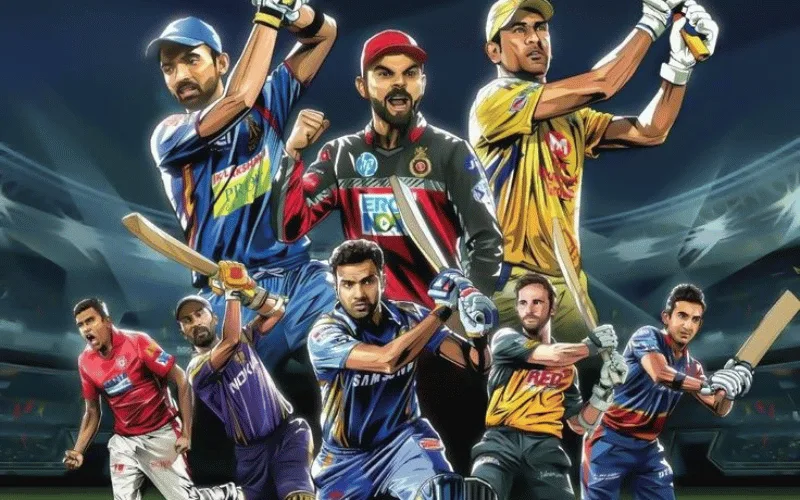The Indian Cricket League (ICL) was established in 2007 as a professional Twenty20 (T20) cricket league in India. Spearheaded by the Essel Group and backed by Zee Entertainment Enterprises, the ICL was created to provide a platform for young Indian cricketing talent and bring a new level of excitement to Indian cricket. While it was short-lived, the ICL’s influence is undeniable, as it laid the groundwork for the highly popular Indian Premier League (IPL). Here’s an in-depth look at the origins, impact, and legacy of the Indian Cricket League.
The Origins of the Indian Cricket League
The ICL was formed in response to the need for more competitive cricket opportunities for players outside the national team. At that time, many players had limited options and little visibility beyond the domestic cricket circuit. The league aimed to bridge the gap between domestic and international cricket by showcasing local talent and attracting a global audience. The ICL’s founders saw T20 cricket as an ideal format to engage viewers, as the shorter matches offered high-intensity, fast-paced action.
The Essel Group, led by Subhash Chandra, launched the ICL with an initial investment and a vision to make it an international brand. They recruited several former international cricket stars as coaches and players, including prominent names like Brian Lara, Inzamam-ul-Haq, and Chris Cairns. With such talent and expertise, the ICL quickly gained attention in the cricketing community, both in India and globally.
Structure of the Indian Cricket League

The Indian cricket team live was structured as a franchise-based tournament, featuring teams named after major Indian cities. Teams included the Chennai Superstars, Mumbai Champs, Kolkata Tigers, Hyderabad Heroes, and Delhi Giants, each comprising a mix of domestic and international players. The league followed a T20 format with each team playing multiple games over a series, similar to how the IPL operates today.
The league also introduced innovative broadcasting techniques to enhance viewer engagement. With the support of Zee Sports, matches were broadcasted on national television, bringing the action directly to homes across the country. The ICL’s presentation, combined with high-octane gameplay, marked a new era in Indian cricket broadcasting, making cricket accessible to millions of fans.
Challenges Faced by the ICL
The Indian Cricket League faced several challenges, the most significant being its lack of recognition from the Board of Control for Cricket in India (BCCI) and the International Cricket Council (ICC). The BCCI opposed the ICL, viewing it as a threat to its monopoly on cricket in India. Consequently, the BCCI refused to recognize the league and imposed sanctions on players who joined it, barring them from representing India at the national and international levels.
The ICC’s non-recognition further restricted the league’s growth, as international players hesitated to participate, fearing repercussions on their careers. Without official support from the BCCI or ICC, the ICL faced an uphill battle in terms of attracting high-profile players and maintaining its viability.
The Influence of the ICL on Indian Cricket
Despite its challenges, the Indian Cricket League had a lasting impact on Indian cricket. It demonstrated the potential of franchise-based T20 leagues and the immense popularity of the T20 format. The ICL’s success in its early days attracted the attention of the BCCI, which subsequently launched the Indian Premier League (IPL) in 2008.
The IPL, which offered full BCCI backing and ICC recognition, quickly rose to prominence and became one of the most successful cricket leagues globally. Although the ICL folded in 2009 due to financial struggles and lack of official support, it was the precursor to the IPL and contributed significantly to the evolution of T20 cricket in India. The ICL’s influence is evident in the IPL’s format, team structure, player auctions, and broadcasting style.
The Legacy of the Indian Cricket League
The ICL’s legacy lies in its role as a catalyst for change in Indian cricket. It provided opportunities for emerging players, many of whom went on to play in the IPL and represent India. It also showcased the viability of franchise-based leagues and proved that Indian audiences had a strong appetite for T20 cricket. Today, the IPL’s global reach, financial success, and impact on cricket culture can all be traced back to the groundbreaking vision of the ICL.
Furthermore, the ICL helped improve the quality of cricket infrastructure and player training in India. By bringing in international stars as coaches and players, the league raised the standard of the game in India, giving local players exposure to international-level skills and strategies.
Conclusion
Though it was short-lived, the Indian Cricket League had a profound influence on Indian cricket and played a crucial role in the development of T20 leagues worldwide. Its challenges highlighted the need for official support and recognition for cricket leagues to thrive, while its successes paved the way for the Indian team score today. Today, the ICL is remembered as a revolutionary initiative that changed the face of Indian cricket, demonstrating the power of innovation and the potential of cricket to captivate a global audience.







